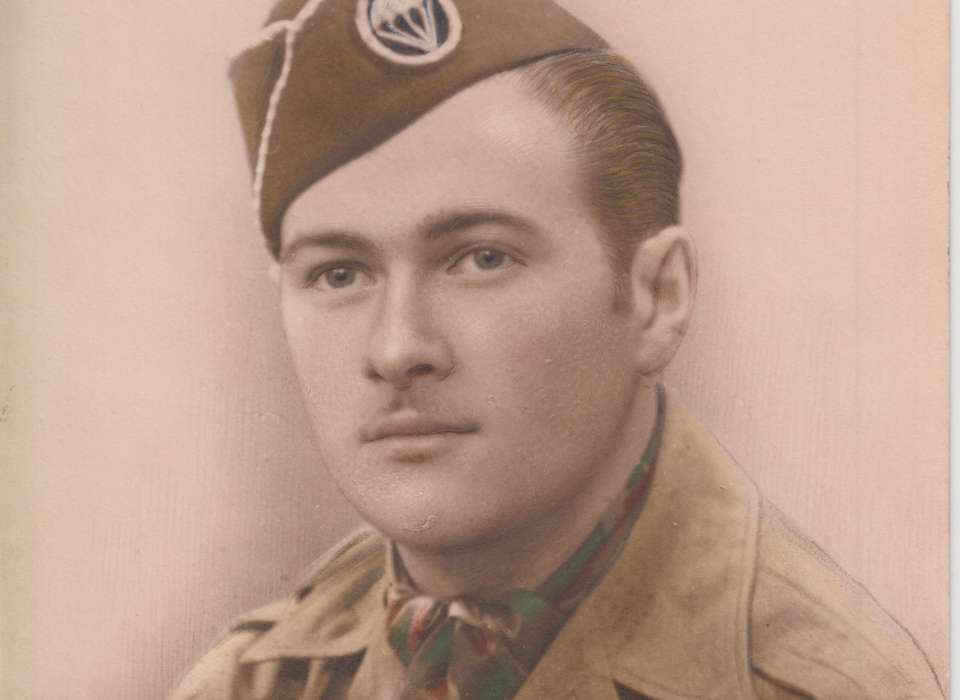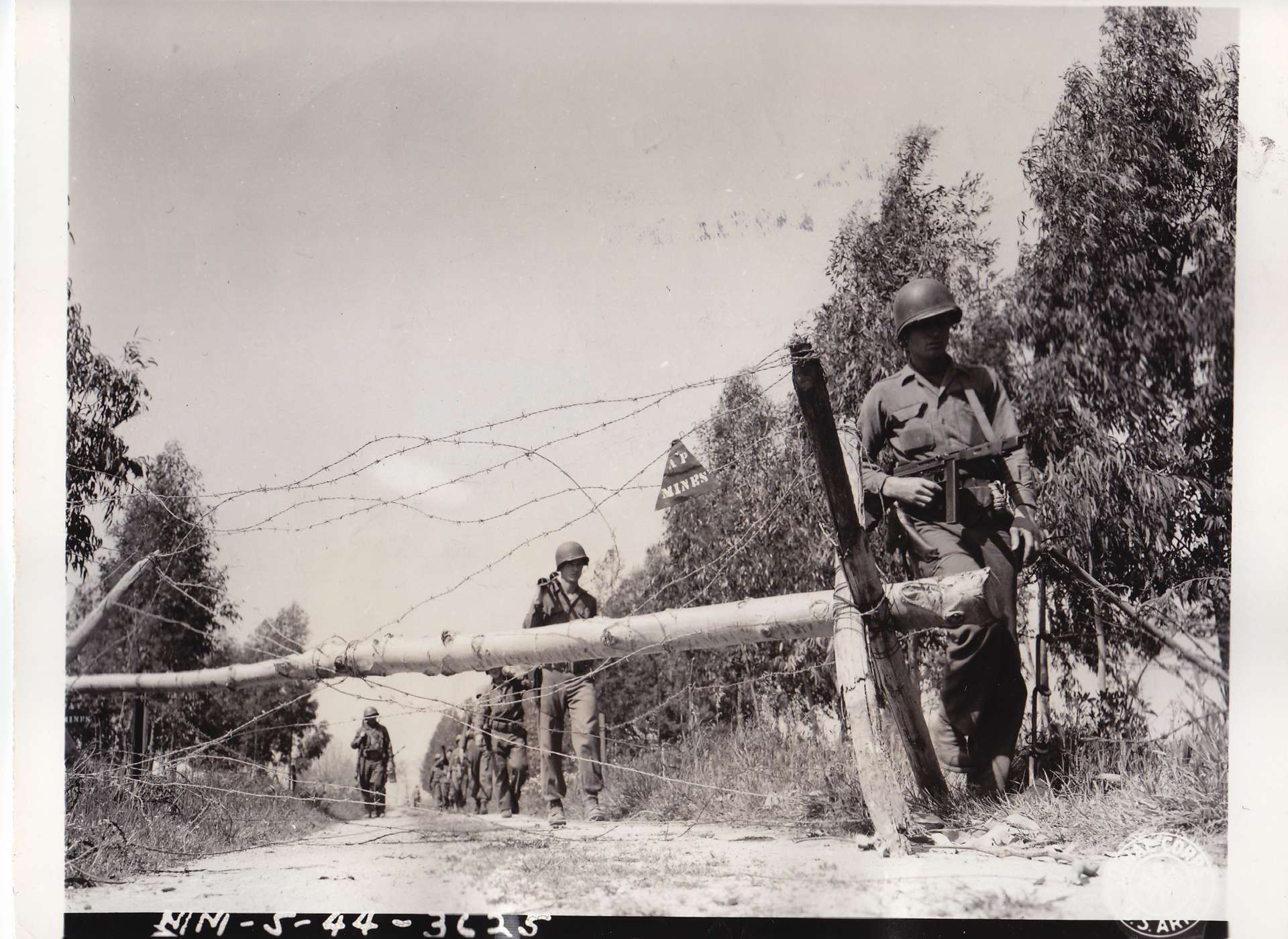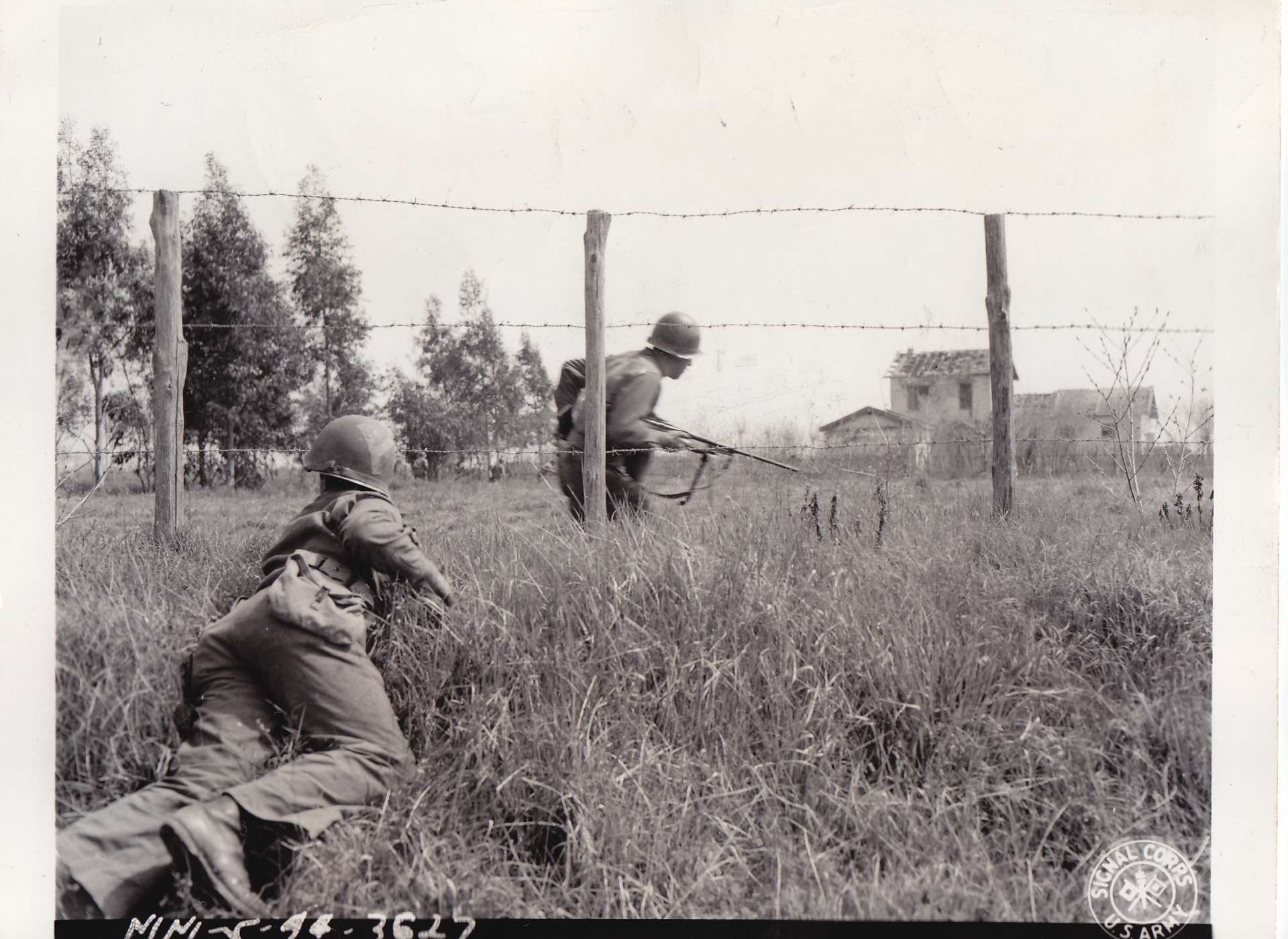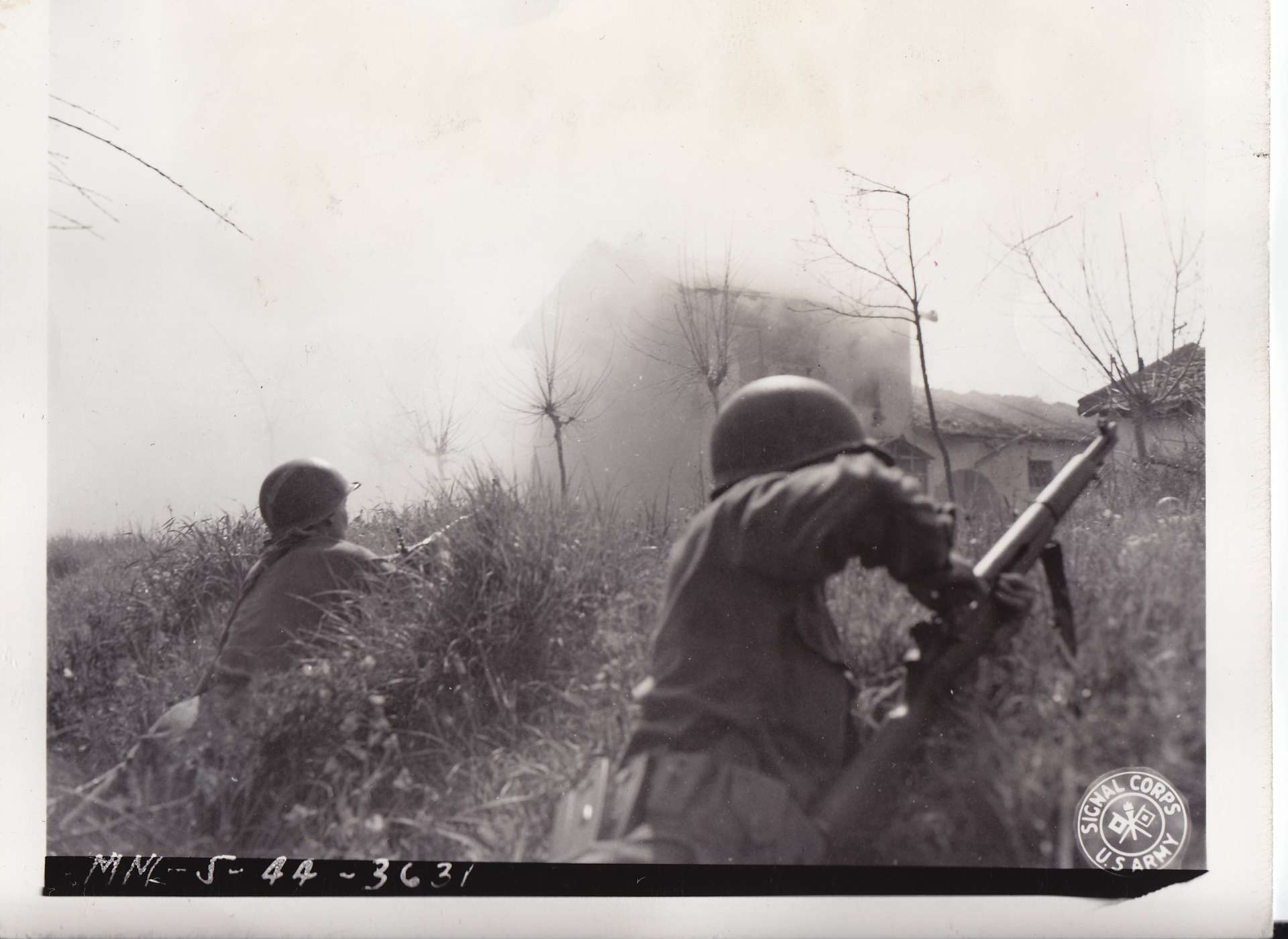Born to Jewish parents in Vienna, Austria, in 1921, Irving Becker saw Hitler’s frightening vision of a new world order firsthand.
In March 1938, when Germany annexed Austria, Becker and his parents watched helplessly as their Jewish community was stripped of businesses, basic civil rights, and dignity. As the situation rapidly deteriorated, Becker was unable to continue his studies; the risk of beatings from members of the Hitler Youth at his school was too great.
It was time to get out of Austria.
In August 1938, Becker was sent to live with his aunt in New York. His parents were unable to secure visas, and would never escape Nazi-occupied Europe. When the United States officially entered the war in December 1941, Becker volunteered for military service but was not accepted—he was classified as an enemy-alien by the US government because of his Austrian citizenship. Due to his status, Becker was also required to report to the authorities every few weeks. Infuriated by the implication that an Austrian Jew could be a Nazi sympathizer, Becker returned to his aunt’s apartment in Brooklyn.
In 1943, Becker was reunited with his childhood sweetheart, who was also able to escape Austria. Two weeks after the couple wed, Becker received an induction notice from the draft board: the ban on enemy aliens serving in the military had been lifted to satisfy manpower demands of the rapidly expanding military.
Becker initially served in an artillery unit at Ft. Bragg, which he found to be intolerably mundane. In an effort to escape life in the field artillery, he volunteered for a new unit being formed called the First Special Service Force (FSSF). Becker was accepted, and put on a train bound for Butte, Montana, where the Force was training for its first mission.
“Enterprises must be prepared, with specially trained troops of the hunter class, who can develop a reign of terror . . . leaving a trail of German corpses behind them.”
Prime Minister Sir Winston Churchill, June 6, 1940
Initially envisioned to descend on and destroy strategic targets in occupied Europe, the FSSF was the first and only unit of its kind. It was a joint US-Canadian outfit, where all members were qualified parachutists, rigorously trained in mountaineering, winter warfare, demolitions, and hand-to-hand fighting. Also superbly equipped, the men of the Force were issued a custom dagger, specifically designed to silently eliminate enemy personnel. While training in Montana, Becker endured hazing and racial slurs from some soldiers. Becker referred to it as the double whammy of being a German-speaking Jew. Later, in combat the familiar racial epithet of “Jew boy” that he heard so much during training in the United States stopped all together, as Becker recalled, because he had live ammunition. In the summer of 1943, the FSSF received orders for its first combat mission.
Spearheading the invasion of the Japanese-occupied island of Kiska in the Aleutians chain, Becker and the FSSF came ashore to find the island completely abandoned. The entire Japanese garrison had evacuated under cover of dense fog shortly before the invasion. Deemed too valuable an asset by the Allied High Command to just sit around, the FSSF was immediately redeployed to Italy.
-

Photo courtesy of the National Archives
-

Photo courtesy of the National Archives
-

Photo courtesy of the National Archives
-

Photo courtesy of the Becker Family
-

Designed in part by First Special Service Force commander Colonel Robert Frederick, and only issued to combat personnel of the unit, this unique edged-weapon became symbolic of the FSSF. Sergeant Becker carried this particular example throughout the war.
Gift in Memory of Sergeant Irving Becker, 2017.248
-

During the Anzio campaign, the First Special Service Force printed up stickers and cards with the unit insignia emblazoned on them along with the phrase, “the worst is yet to come," printed in German. Members of the Force would infiltrate enemy lines under the cover of darkness and leave the cards and stickers on doors, fence posts, and even on the foreheads of German corpses. The psychological effect was apparent when the captured diary of a German soldier revealed that he and his comrades referred to the men of the FSSF as the “Black Devils” who seemed to materialize out of thin air.
During the Italian Campaign, the Force developed the reputation as an outfit that could do the impossible. In a series of hilltop battles, soldiers of the FSSF routinely scaled sheer cliff faces to assault German positions from the most unlikely avenues of approach, in many cases taking the enemy completely by surprise. Becker recalled his days there as cold and muddy, and being “scared as hell.” Because of his fluent German, Becker was always selected for nighttime patrols behind German lines to snatch prisoners for intelligence-gathering purposes, a terrifying duty he did not like. As the Force slogged its way to Rome, Becker was peppered by German shrapnel. He quickly recovered in a field hospital and was back on the line in two weeks.
After Italy, the FSSF fought with distinction in Southern France until December 1944 when the Force was disbanded. The Force, never numbering more than 1,800 men at any given time, had accounted for approximately 12,000 German casualties and 7,000 prisoners. The feat however, had not come without great cost; the Force had been bled white with more than 2,700 casualties among its ranks.
Becker, one of the lucky ones, was rolled into the 474th Infantry Regiment with many other FSSF survivors, then fought the rest of the war and occupied Norway afterwards. While in Norway, Becker tried to find the whereabouts of his parents, but learned instead that his mother and father had died in Auschwitz in 1944. Becker returned home to his wife in 1945.
Becker and the men of the First Special Service Force are the direct lineage of the US Army’s Special Forces of today. The signature “Black Dagger” carried by the men of the Force in World War II adorns the US Army’s Special Forces patch in tribute to them.
Larry Decuers
Larry Decuers is a former Curator at The National WWII Museum and veteran of the US Army's 101st Airborne Division.
Cite this article:
MLA Citation:
APA Citation:
Chicago Style Citation:







![Max Fuchs, New York City cantor, sings as Rabbi Sydney [sic] Lefkowitz, Richmond, VA, conducts the first Jewish services from Germany.](/sites/default/files/styles/max_650x650/public/2025-10/image1.jpg)






